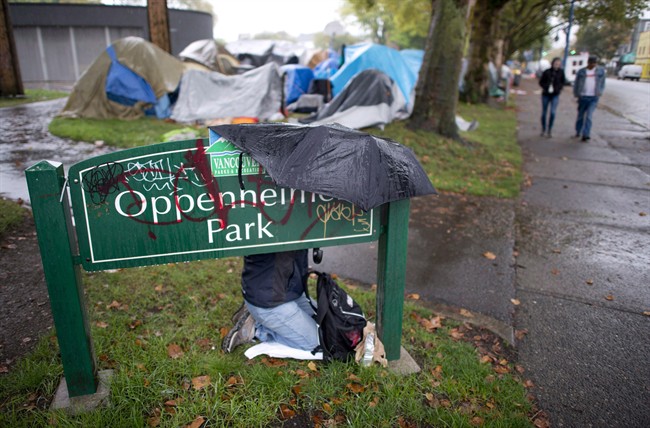OTTAWA – Spending an extra $46 per Canadian a year on affordable housing could dramatically reduce homelessness, a new research report concludes.

Existing intervention programs can only go so far if those who find a way off the streets or out of shelters can’t afford their own place to live, say researchers from York University and the Canadian Alliance to End Homelessness.
Their annual State of Homelessness in Canada study was published today.
With a budget surplus on the horizon, it’s time to return to the days when federal cash was directly spent on building those places, said Stephen Gaetz, the director of the Canadian Observatory on Homelessness at York and one of the lead authors of the study.
“It’s time to have a conversation – what are we going to do with that surplus?” he said.
“This is one that isn’t going to break the bank. It’s going to help not only end chronic homelessness but it’s going to help many, many, many thousands of Canadians who are at risk of homelessness.”
An estimated 235,000 Canadians a year experience homelessness at a cost to the economy of $7 billion. Despite $2 billion earmarked in federal funding, nationally the numbers still aren’t moving down, the report said.
The main reason behind what seems to be an intractable problem is a 46-per-cent decrease in federal investment in affordable housing over the last 25 years, the report suggested.
- Alberta to overhaul municipal rules to include sweeping new powers, municipal political parties
- Canada, U.S., U.K. lay additional sanctions on Iran over attack on Israel
- Trudeau says ‘good luck’ to Saskatchewan premier in carbon price spat
- No more ‘bonjour-hi’? Montreal mayor calls for French only greetings
Affordable housing is defined as shelter that doesn’t cost more than 30 per cent of a low-income person’s budget.
In 1989, $115 per capita was spent each year on adding to affordable housing stocks. Today, it’s closer to $60 a year, while the Canadian population has risen 30 per cent, the report found.
Put another way, in 1982, there were 20,450 affordable housing units built, while in 2006 there were 4,393, the report said.
Increasing the per-capita spending to at least $106 per Canadian – or $1.7 billion a year in federal funding – would allow for the construction of about 8,800 new units a year.
The money wouldn’t just cover construction.
Researchers are also proposing the creation of housing benefits similar to the existing $100 child care benefit provided by the federal government and tax credits, which would help those at risk of homelessness to hold on to their space.
Those who own homes get $8.6 billion a year in tax and other benefits, the report noted.
“As Canadians, we are spending more money on people who do not need help compared to those in greatest need,” the report says.
“And by not spending on those in greatest need, we are not only creating hardship for many Canadian families, we are creating a considerably larger expense for the Canadian economy.”
While the national numbers on homelessness seem stuck, the report does note success with some specific community programs.
In 2008, the federal government contributed $110 million for a five-year research project to explore effective options to cope with mentally ill people who were homeless.
The At Home/Chez Soi study found that starting with providing housing, and backing that up with support services, was more effective and cost-efficient at getting people off the streets than trying to treat them first.
The federal government has since expanded the program, committing an additional $600 million over five years.
“While there are still some areas that need work – we need more robust solutions for youth homelessness, women fleeing violence and Aboriginal homelessness – we are figuring out solutions on the intervention side,” the report said.
“The one missing piece of the puzzle, however, is affordable housing.”

Comments